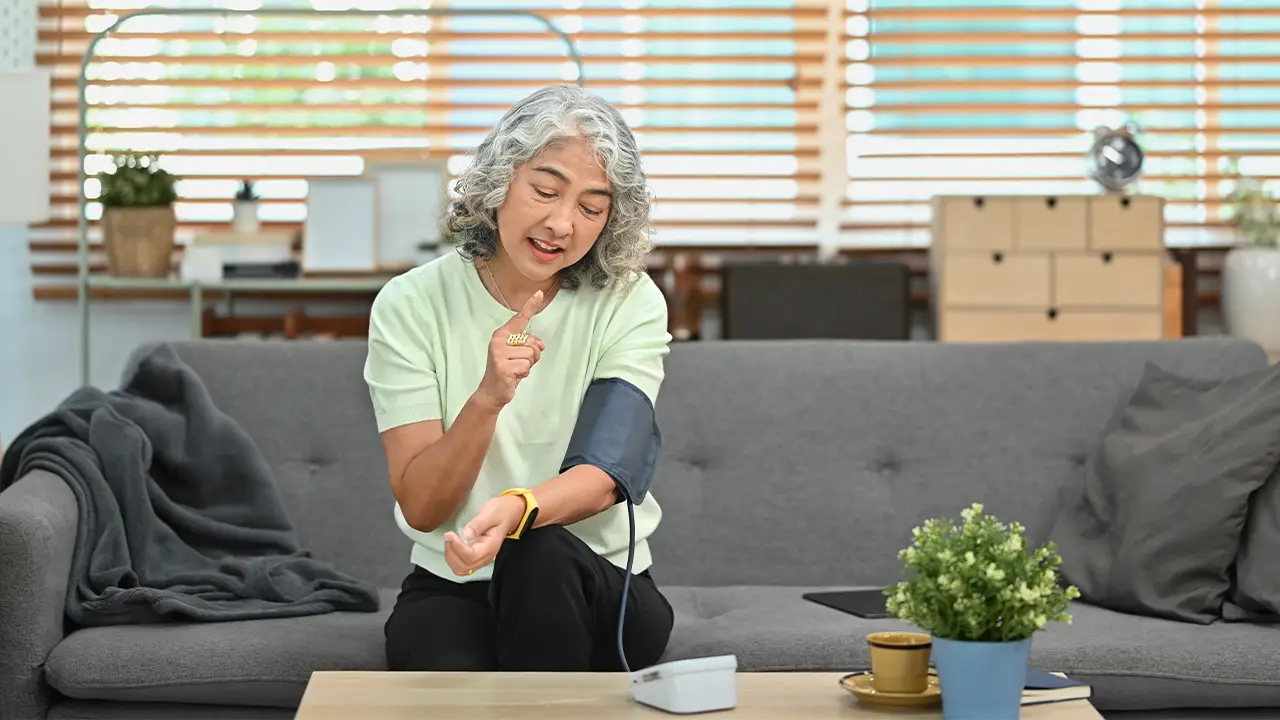The American Heart Association reports that over 100 million individuals in America suffer from high blood pressure, also known as hypertension. With the incidence of this condition on the rise, it has become essential for patients to take charge of their health by utilizing tools such as remote patient monitoring (RPM). This innovative technology enables patients to keep track of their blood pressure readings in the comfort of their own homes, aiding in the diagnosis of hypertension and supporting healthcare providers (HCPs) with real-time data for timely intervention.
In this article, we will explore how home blood pressure monitoring (HBPM), a specific type of remote monitoring, can be utilized alongside RPM to enhance patient care.
The Importance of Home Blood Pressure Monitoring
At home blood pressure monitoring is a technique used to track a patient’s systolic and diastolic blood pressure levels from the comfort of their own home. This approach entails the use of an electronic device known as a blood pressure monitor that patients can use to take their own blood pressure measurements.
At home blood pressure monitoring is a technique that is frequently suggested for individuals with hypertension or other health conditions that necessitate frequent measurements of blood pressure. By recording their readings and sharing them with their healthcare professionals, patients may assist in managing their condition. It’s worth noting that blood pressure may fluctuate throughout the day, and HBPM can help identify trends in blood pressure over time.
Benefits of Home Blood Pressure Monitoring
Continuous Monitoring and Tracing of Blood Pressure Readings
The RPM system allows patients to track and record their blood pressure readings over time. This is particularly beneficial for patients with hypertension as it helps care providers to adjust treatment plans. The recorded blood pressure measurements can also provide valuable information about patterns and trends over time, allowing for more informed decisions about treatment.
Convenience and Ease-of-Use
Blood pressure monitoring at home using a connected blood pressure monitor makes it easier for patients to measure their blood pressure levels regularly. This eliminates the need for frequent office visits for blood pressure checks, making it more convenient for patients. It also allows for more frequent monitoring of blood pressure changes, which is key for maintaining good blood pressure control.
Enhanced Communication and Management of High Blood Pressure
Monitoring blood pressure at home improves communication between patients and healthcare professionals. Patients can take their blood pressure readings at home and share the results with their HCPs. This allows health professionals to monitor patients’ blood pressure levels more closely, leading to more effective management of hypertension. Better communication and monitoring of hypertension can help prevent serious health complications.
Easy Access to Blood Pressure Readings
Connected blood pressure monitors allow for real-time access to patients’ blood pressure measurements for care providers. This makes it easier for healthcare professionals to monitor patients with hypertension and make more informed decisions about treatment. By having easy access to patients’ blood pressure readings, HCPs can intervene faster when necessary, reducing the risk of adverse health outcomes.
In summary, HBPM provides several benefits, including the convenience of measuring blood pressure at home, the ability to track and record blood pressure readings over time, easy access to blood pressure readings for healthcare professionals, and improved communication and monitoring of hypertension. With the increasing availability of connected blood pressure monitors and RPM, it has become easier to use and more accessible for patients to monitor their blood pressure levels regularly.
Home Blood Pressure Monitoring with DrKumo RPM Technology
Accurate blood pressure measurements are crucial for the diagnosis of high blood pressure and the prevention of organ damage. Hence, home monitoring is becoming increasingly popular, but it is essential to take accurate readings to ensure proper diagnosis and treatment. DrKumo RPM technology provides patients with an easy-to-use home blood pressure device, which connects to DrKumo’s cloud-based platform. DrKumo RPM provides real-time monitoring of patient vitals, including blood pressure levels, enabling HCPs to track their patient’s blood pressure remotely. With this technology, patients can take accurate readings regularly, and care providers can ensure accurate readings are recorded in the patient’s health record.
DrKumo RPM technology leverages IoT remote monitoring technology to provide innovative and effective solutions for remote monitoring of patients. By providing real-time monitoring of blood pressure, HCPs can track their patient’s health remotely and diagnose health conditions accurately. DrKumo advanced AI/ML algorithms can generate meaningful insights from the data collected, enabling proactive intervention and support for patients in managing their health conditions. DrKumo RPM technology is designed to help in solving the most painful problems in healthcare with a user-friendly solution that is powered by our state-of-the-art, HIPAA-compliant, mobile-enabled, continuous real-time monitoring, and AI/ML engine.
Home Blood Pressure Monitoring: Implementation and Best Practices
Here are some guidelines on how to implement HBPM for people with high blood pressure:
- Select the right home blood pressure monitor. Consider factors such as ease of use, accuracy, and cost.
- Provide clear instructions to your patients on how to set up and use the monitor properly. This may involve providing instructional materials, conducting training sessions, or referring patients to online resources.
- Instruct patients to take two or three readings, with each readings taken one minute apart, to check for consistency.
- Advise patients to take their readings less often if their blood pressure is consistently within normal levels.
- Establish guidelines for tracking blood pressure readings. For example, recommend taking three readings in the morning before breakfast and in the evening before dinner. Provide information on what levels are considered normal or concerning.
- Advise patients to periodically check to see if their monitor is still providing accurate readings, as home blood pressure monitoring devices may vary in accuracy.
By following these guidelines for home blood pressure monitoring, patients with high blood pressure can effectively monitor their blood pressure levels at home and manage their health more effectively.
Takeaways
Monitoring blood pressure at home is a crucial practice for HCPs in managing hypertension and ensuring optimal patient outcomes. HBPM allows for more frequent and accurate blood pressure readings, reducing the risk of adverse health outcomes and saving time and costs. DrKumo RPM offers a comprehensive platform for HCPs to remotely monitor their patients’ blood pressure readings, allowing for timely adjustments to treatment plans and improved patient care.
Enhance your practice with at-home blood pressure monitoring and RPM. Contact DrKumo now for better high blood pressure management and improved patient outcomes.








